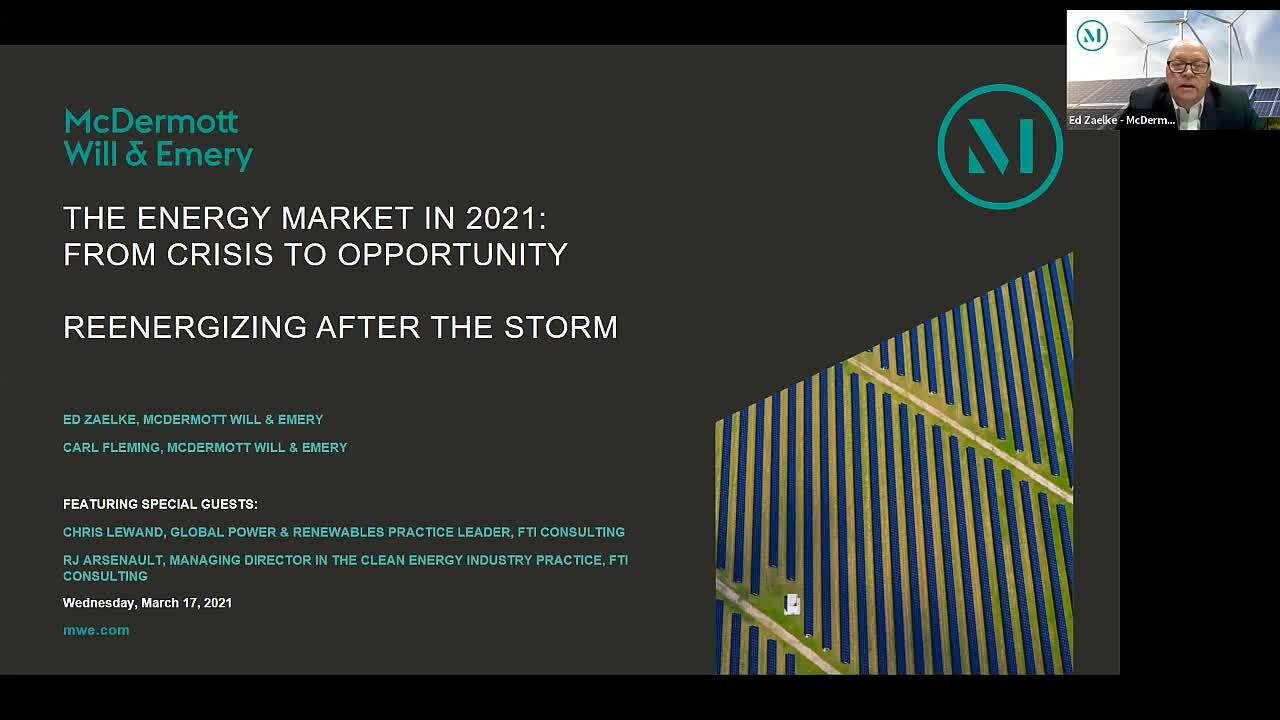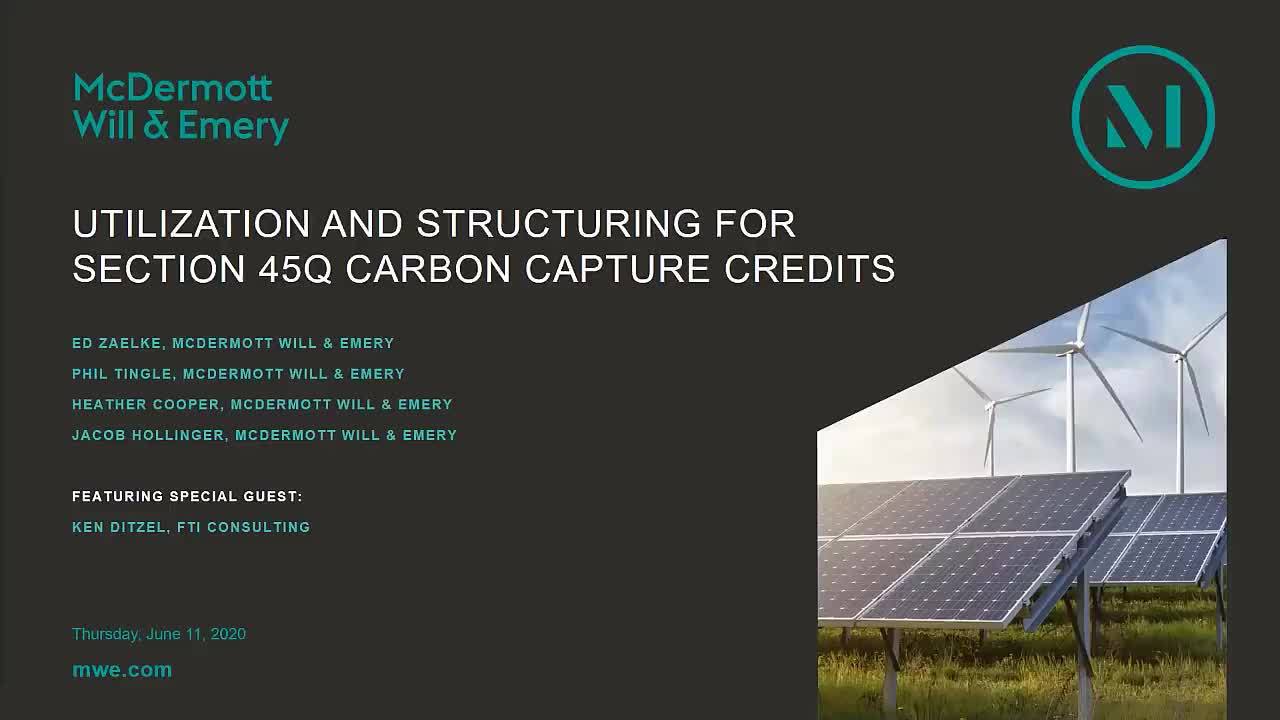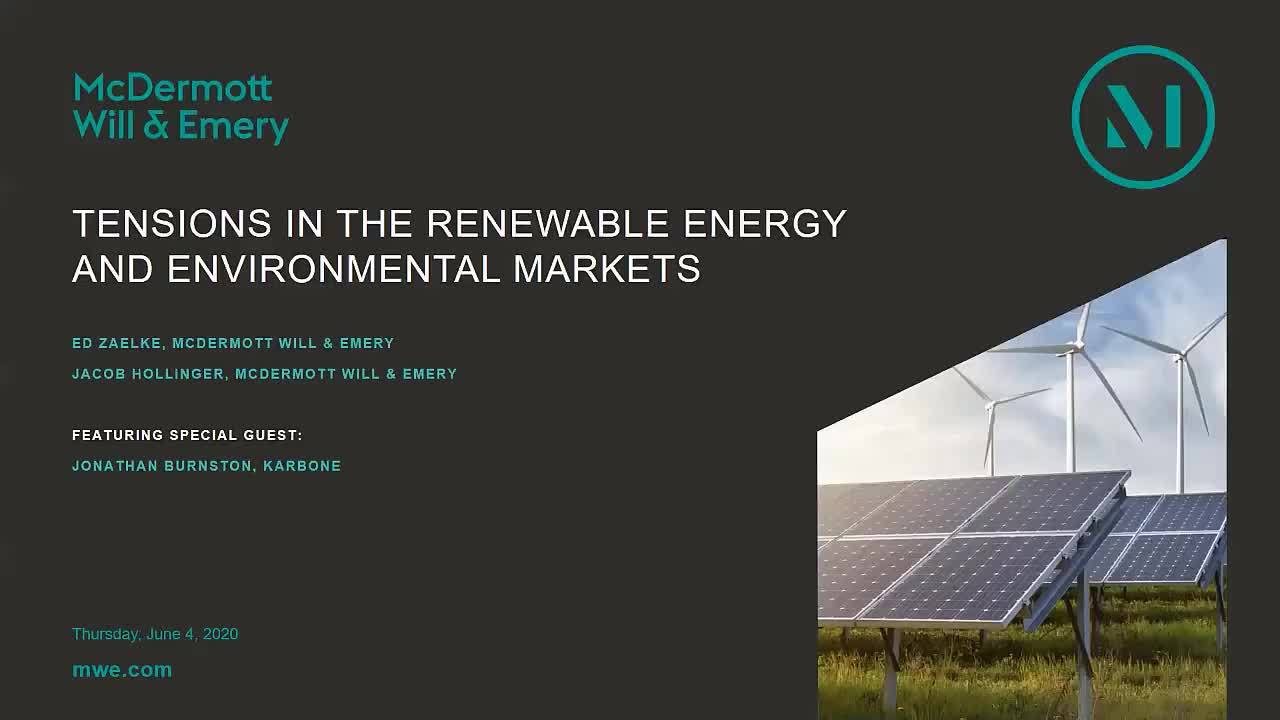The energy market has undergone significant change in the past 12 months, with even more on the horizon. Our webinar series explores how these changes have shaped—and will continue to impact—the energy industry, including discussions of what’s to come.
Our latest webinar featured FTI Consulting’s Chris LeWand, Global Power & Renewables Leader and RJ Arsenault, Managing Director in the Clean Energy Industry Practice.

Below are key takeaways from the webinar:
- Project valuations will be impacted in both the short- and medium-term, but how much they are impacted depends on which side of the table they are on. Larger sponsors with the balance sheet to handle this issue will likely play this out and address these issues via the existing waterfall. However, smaller sponsors without the balance sheet will have to soon deal with hedge providers, debt and tax equity, each of which now find themselves in new positions within the capital stack.
- The lack of utility Power Purchase Agreements (PPAs) are both at the front and back of this. The lack of PPAs in Texas resulted in many developers going out and securing these hedge products in the merchant market at a high price. While effective at the time, we now see the downside of that pervasive structure in extreme weather events. So, we may see a rethinking of the PPA market in Texas as a result of this event and new means of securing offtake going forward.
- As far as how the market in Texas will react, things are temporarily slowing down or hitting the pause button when it comes to development, debt and tax equity. There is now a lot going on in Texas in terms of litigation, resignations and political oversight in addition to standard course project development and financing. While due diligence has always been heavy for these types of transactions, it will now get even heavier. Projects will take longer and be a little more costly to transact upon. This is not insurmountable, as most debt and tax equity providers are always evolving in their diligence requirements, and this can be viewed as a natural progression in a way to find solutions.
To access past webinars in this series and to begin receiving Energy updates, including invitations to the webinar series, please click here.
read more

 Subscribe
Subscribe


